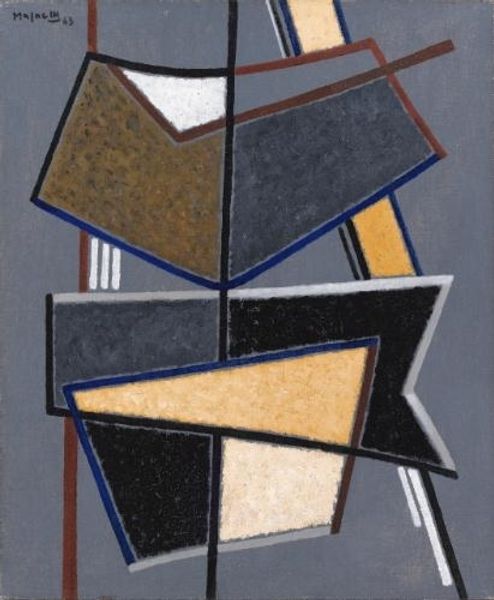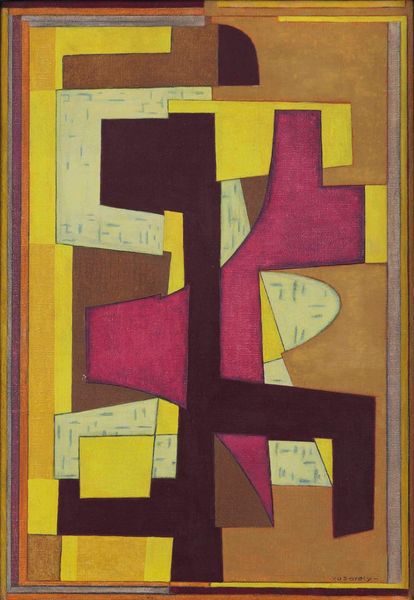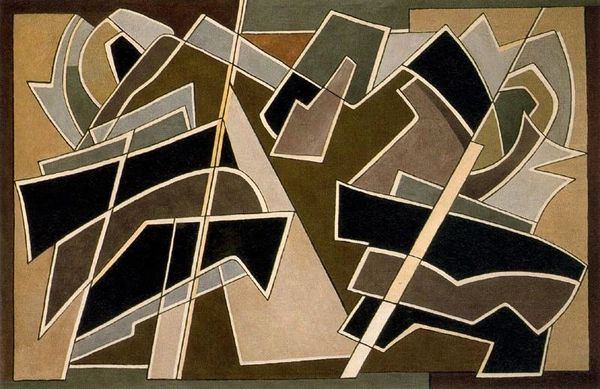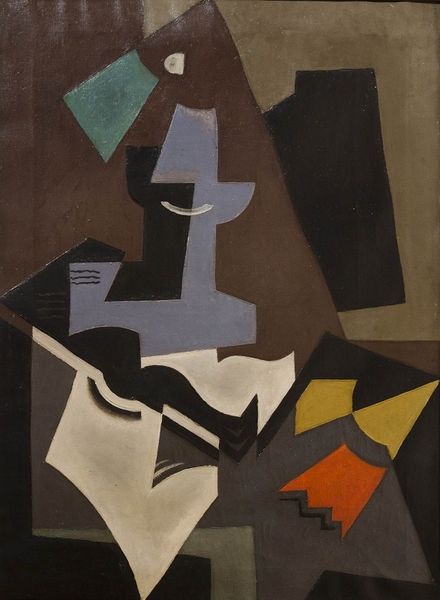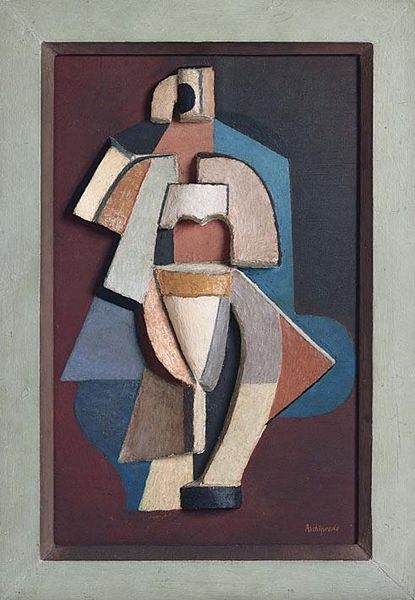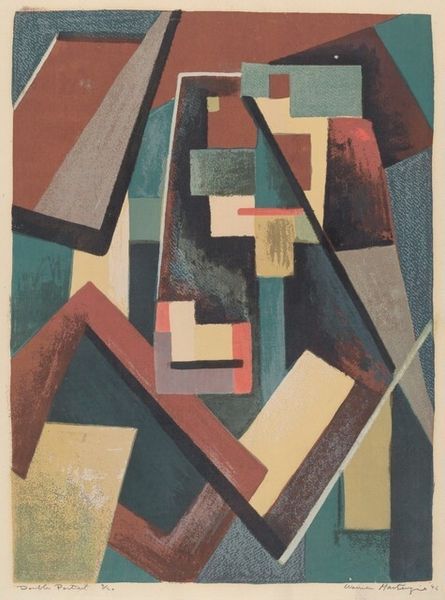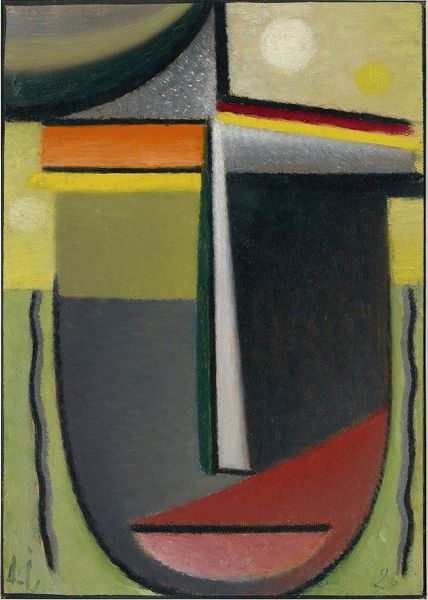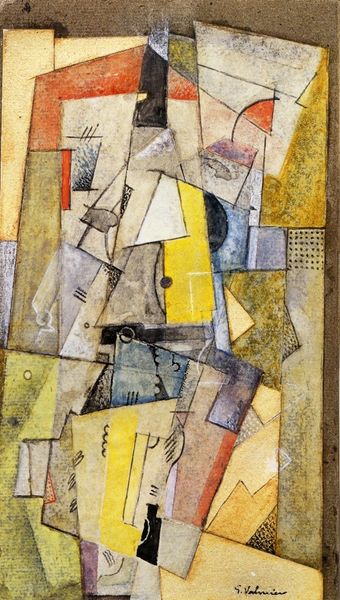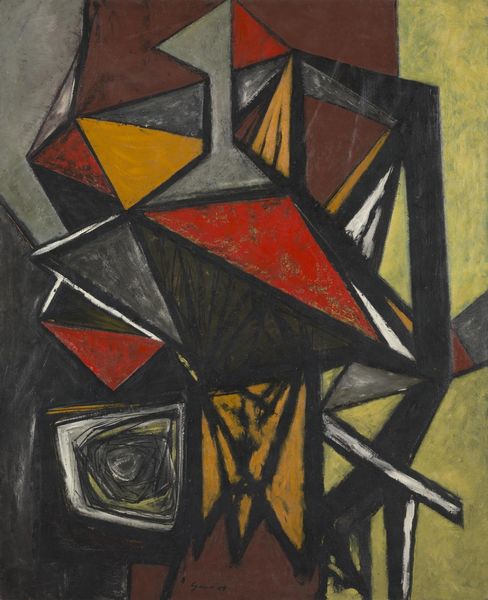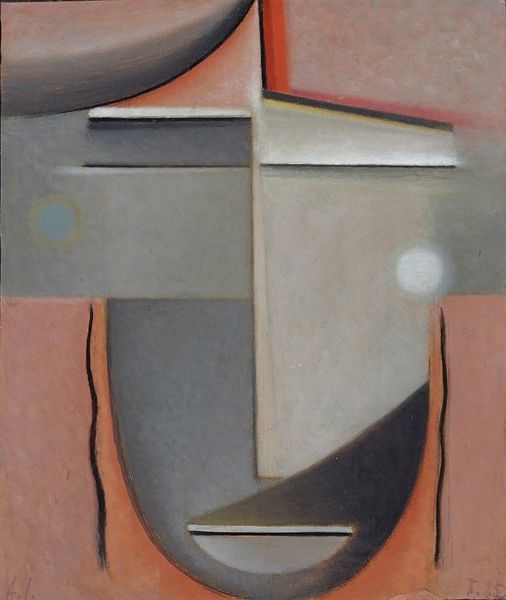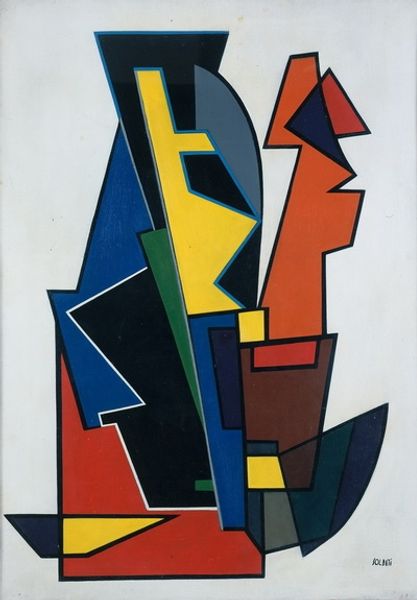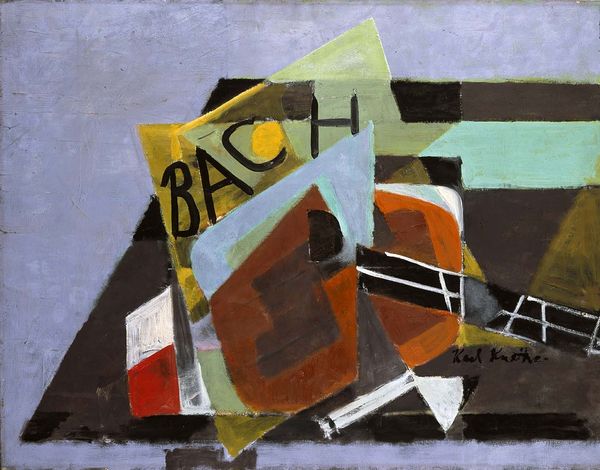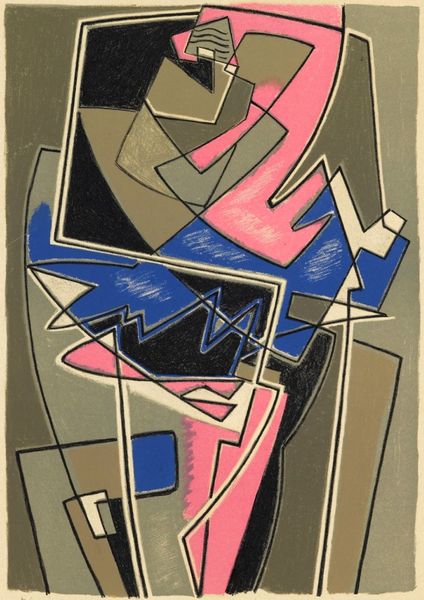
mixed-media, painting, oil-paint
#
mixed-media
#
painting
#
oil-paint
#
geometric pattern
#
linocut print
#
geometric
#
art-informel
#
abstraction
Copyright: Alberto Magnelli,Fair Use
Editor: So, this is Alberto Magnelli’s "Composizione" from 1962. It’s an oil painting, very geometric. I find its angular shapes somewhat jarring, yet the muted brown backdrop seems to want to pull me in. How do you interpret this work, considering its historical context? Curator: Looking at this "Composizione," it's crucial to remember that Magnelli was working amidst post-war anxieties and a fervent desire for new forms of expression. The severe geometry and limited color palette, even the earth tones, can be seen as a response to the chaos. But beyond aesthetics, where do you see the tension in the work, given its title, "Composition?" Does it appear to you to be resolved or intentionally unsettling? Editor: That’s an interesting point. The "composition" feels disrupted, like fractured pieces barely held together. It’s almost like Magnelli is reflecting a fractured society. So would you say the geometric forms are metaphors for broken social structures? Curator: Precisely! The abstraction isn’t merely about aesthetics; it reflects a deeper societal fragmentation. Art Informel, the movement Magnelli aligned with, rejected traditional forms, searching for new ways to express the rawness of experience. Consider the linocut print influence. How does that relate to concepts of labor, accessibility, and dissemination during that era? Editor: So, the print aspect suggests democratizing art… making it more accessible and relevant to the masses. It almost makes me rethink its original jarring nature... it might be meant to push for new social forms? Curator: Exactly. And the role of abstraction during this time was less about decoration and more about challenging our assumptions of what art – and society – could be. It was a visual language of resistance, a break from the past, if you will. What would you say you have gleaned from our conversation? Editor: It is about seeing beyond the immediate aesthetic, understanding the fractured society and how geometric abstraction, rather than simply decorative, embodies a deeper questioning of social order. Curator: Indeed. Hopefully, that will change how you view abstract art moving forward.
Comments
No comments
Be the first to comment and join the conversation on the ultimate creative platform.
